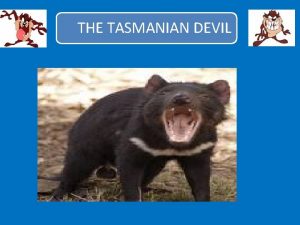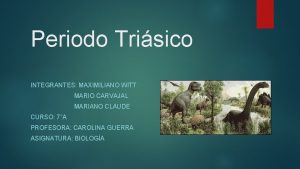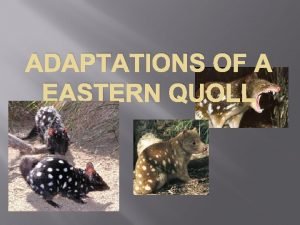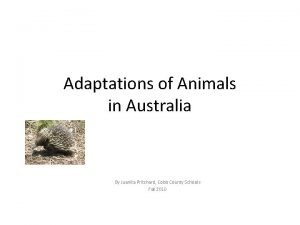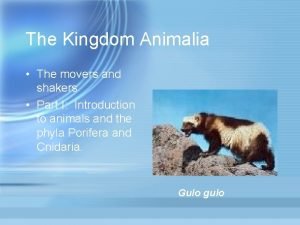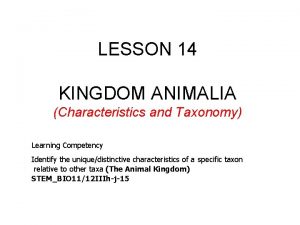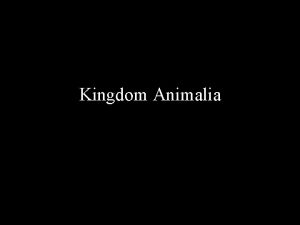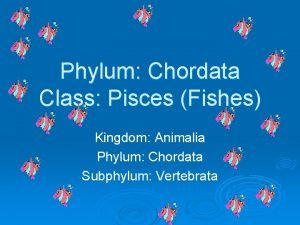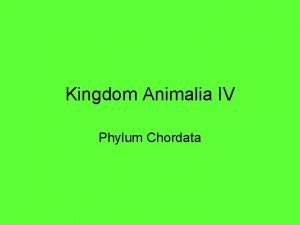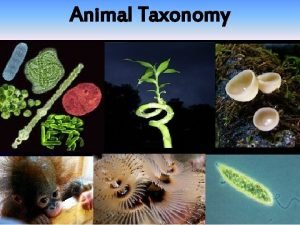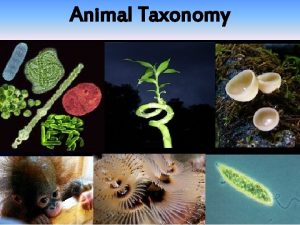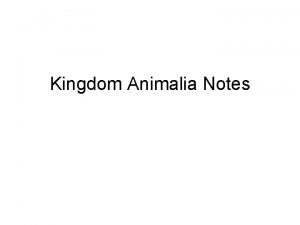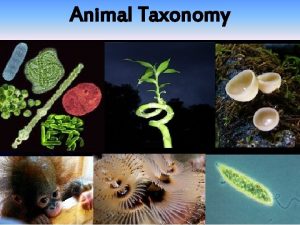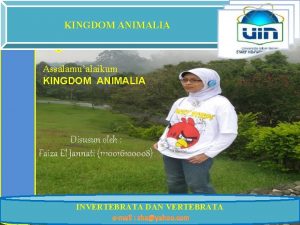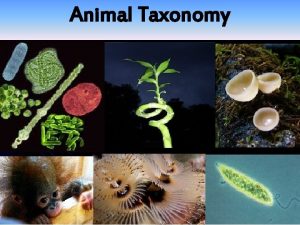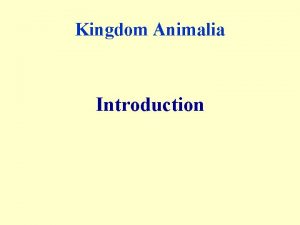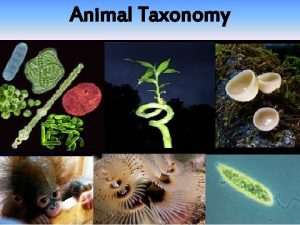THE TASMANIAN DEVIL Tasmanian devil classification Kingdom Animalia















- Slides: 15

THE TASMANIAN DEVIL

Tasmanian devil classification Kingdom: Animalia Phylum: Chordata Class: Mammalia Infraclass: Marsupialia Order: Dasyuromorphia Family: Dasyuridae Genus: Sarcophilus Species: Sarcophilus Harrisii

The Tasmanian devil (Sarcophilus harrisii) was given its common name by early European settlers, who were haunted at night by the sound of its spine-chilling screeches and demonic growls. The largest of the living marsupial carnivores (and Australia's only specialised mammalian scavenger), the Tasmanian devil resembles a robustly-built, small dog with powerful jaws and a set of large, strong teeth.

Where are they found? Today the Tasmanian devil is found only in the wild in Tasmania. It is wholly protected, and a State icon. The Tasmanian devil can be found in all major habitat types in Tasmania, particularly dry eucalypt forests, woodlands and agricultural areas - in fact, almost anywhere they can shelter by day and scavenge for food at night. Population numbers across Tasmania have changed over the last century but numbers were at there highest about 10 years ago. These numbers have dropped dramatically since the 1996 due to the Devil Face Tumour Disease. This is a newly discovered, unusual and fatal condition in Tasmanian devils, characterised by cancers around the mouth and head.

Physical description Tasmanian devils are stocky with a brownish black pelage. They have a white throat patch, white spots on their sides and backside, and a pinkish snout. The head is massive with well developed jaw muscles. Molar teeth are heavy and adapted for their role in crushing bone and tearing through muscle and thick skin.

Vertebrates Tasmanian Devils are mammals that have a backbone this makes them a vertebrate. Tasmanian Devils skeleton

Lifespan of the Tasmanian Devils. Tasmanian devils most often live to a maximum of 5 years old in the wild. Most young die immediately after dispersing out of their natal range as a result of food scarcity or competition. They may live 7 to 8 years.

DEVILS FACE TUMOUR DISEASE Due to this disease Tasmanian devil now officially endangered.


Other threats to the Tasmanian Devil population To lower the number of Tasmanian Devils lost to road kill, warning signs for drivers to drive 45 km/h from dusk to dawn have been put on Southern Tasmania’s Forestier Peninsula, between Dunalley and Eaglehawk neck In 2006, road killed one quarter of all the Tasmanian Devils in this area. A management program which is trying to eradicate the Devil Disease from the isolated peninsula’s wild population.

What do they eat? Tasmanian devils will eat any meat that is available. This includes insects, birds and beached fish. But their favourites are small mammals, such as possums, wallabies and wombats. To have a meal they pounce and bite at the head or chest off of their prey. They are also scavengers that locate dead animals in the bush. Their massive jaw muscles and strong teeth allow them to eat almost every part of the carcass, including the hide and the skull.

Habitat Tasmanian devils are numerous throughout Tasmania except in areas where there is a lot of deforestation. They are most numerous in coastal heath and rangeland areas where agricultural practices maintain a constant supply of food. Their dens typically are located in hollow logs, caves, or burrows. Two Tasmanian devils in a log.

Facts about Tasmanian Devils reach an average weight of 11 kg for males, and 7 kg for females. They have jaws which are more powerful than that of the tiger, enabling them to hunt and kill efficiently. In relation to their size, Tasmanian Devils have the strongest bite of any living mammal. Tasmanian Devil babies are the size of a pea when they are born.

Why I chose this animal? I chose the Tasmanian Devil because it is becoming extinct due to the Facial tumour disease which is wiping out the species. I wanted to share this information with people so that they could be made aware of the status of the Tasmanian Devil. I also chose the Tasmanian Devil because they are a very unusual animal. Tasmanian devils can only see in black and white and on rough land Tasmanian Devils can run faster then humans but on smooth terrain they cannot run fast at all.

Bibliography Booth, Christina, Purinina : a devil's tale , Sydney : Lothian Books, 2007. Bradshaw, C. , B. Brook. . Disease and the devil, Sydney: University press, 2005 Clayton, Mark, CSIRO list of Australian vertebrates, Collingwood, Vic: CSIRO Publishing, 2006. etsy. com Nowak, R, Walker's Mammals of the World. Baltimore: The Johns Hopkins University Press, 1991 ozanimals. com Peter Menkhorst & Frank Knight, A field guide to the mammals of Australia, UK: Oxford , 2001. pondok-cerita. blogspot. com Pyers, Greg, Tasmanian devil, Port Melbourne, Vic. : Echidna Books, 2006
 Tasmanian devil kingdom
Tasmanian devil kingdom Prehistoric tasmanian devil
Prehistoric tasmanian devil Tasmanian devil physiological adaptations
Tasmanian devil physiological adaptations Adaptation of animals in desert
Adaptation of animals in desert Old kingdom middle kingdom new kingdom
Old kingdom middle kingdom new kingdom Old kingdom middle kingdom new kingdom
Old kingdom middle kingdom new kingdom Roman empire
Roman empire Capital of egypt during the old kingdom
Capital of egypt during the old kingdom Nine phyla of kingdom animalia
Nine phyla of kingdom animalia Kingdom animalia cell structure
Kingdom animalia cell structure Animalia characteristics
Animalia characteristics Cladogram of the 6 kingdoms
Cladogram of the 6 kingdoms Cladogram animalia
Cladogram animalia Kelas pisces
Kelas pisces Monera protista fungi plantae animalia
Monera protista fungi plantae animalia What are chordates
What are chordates
